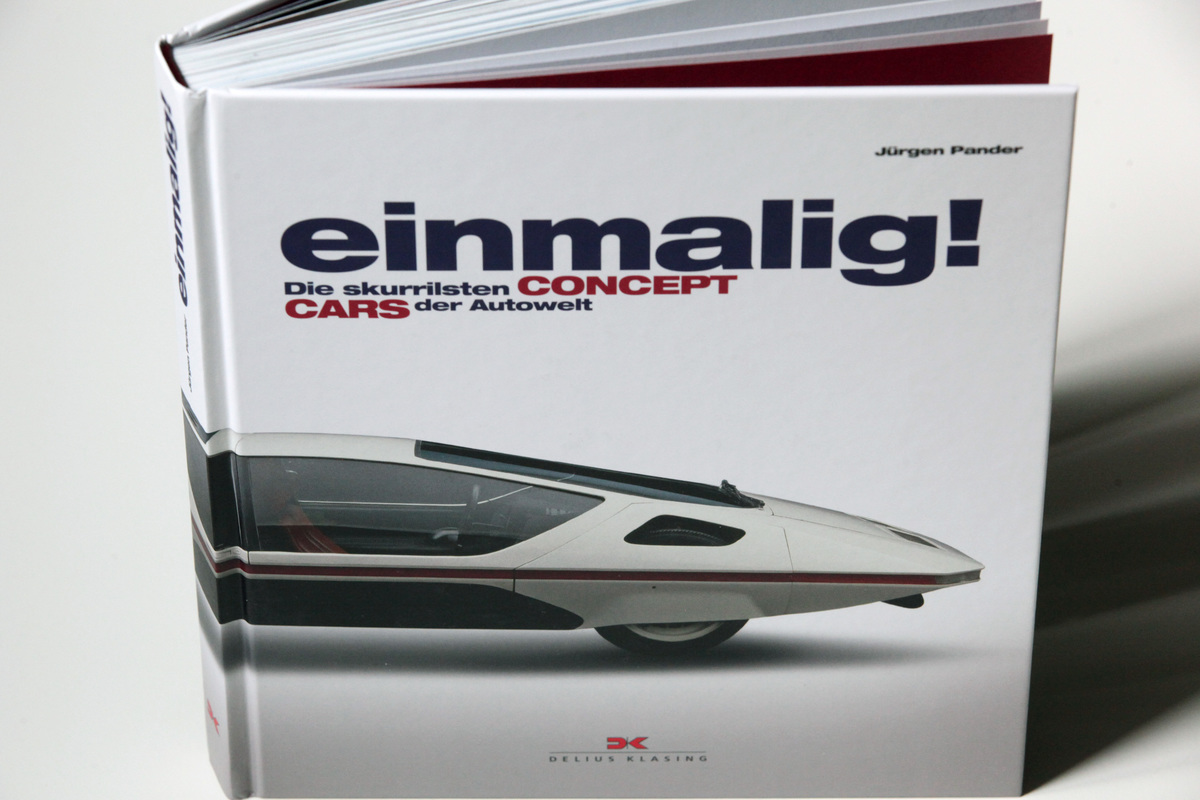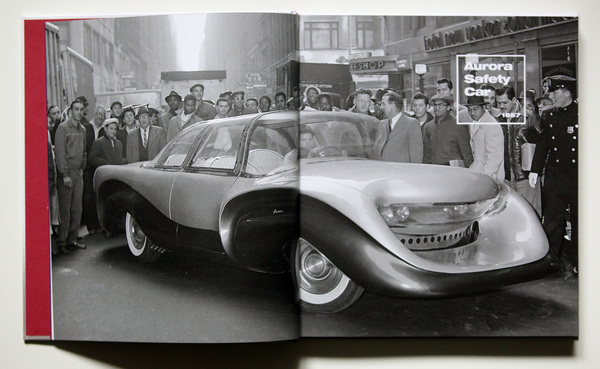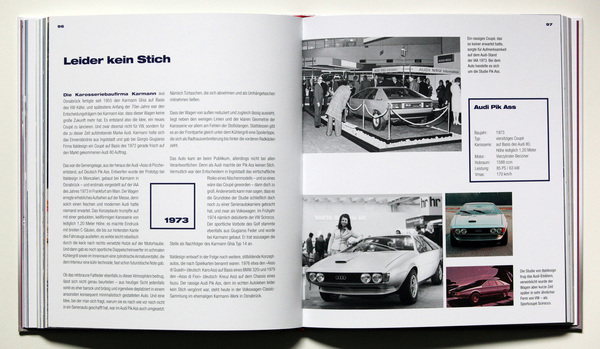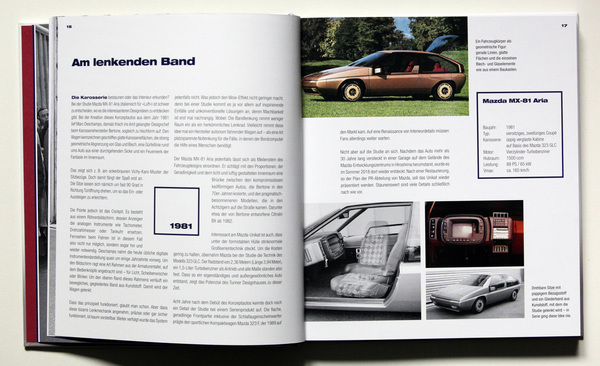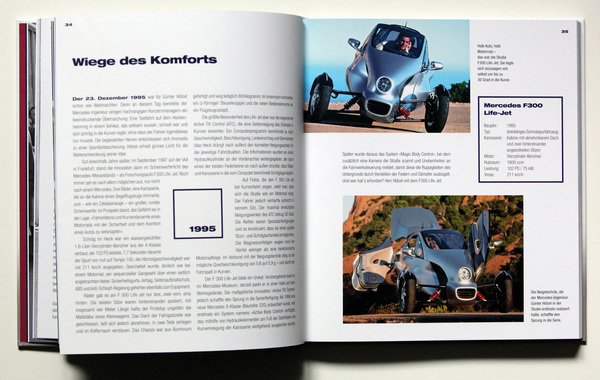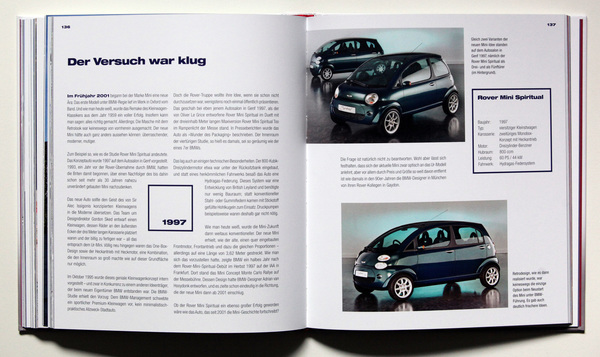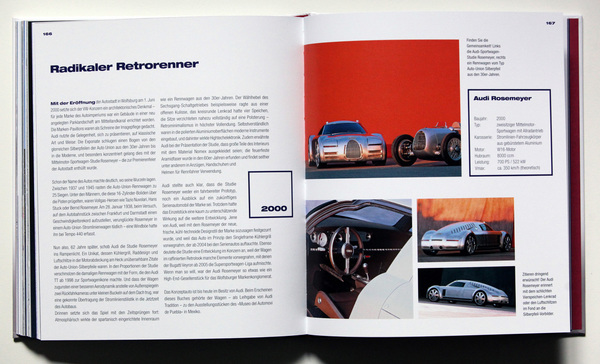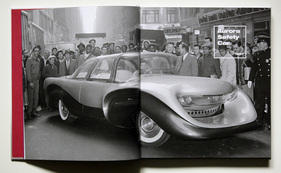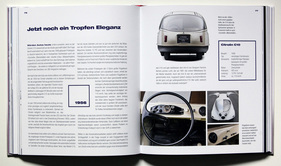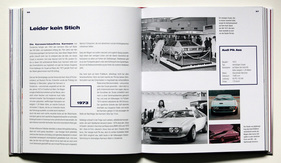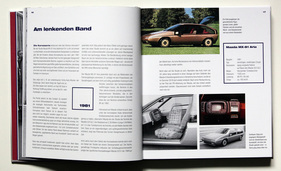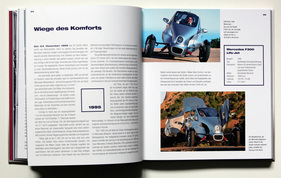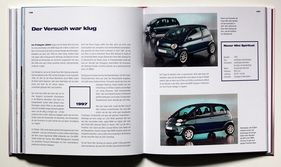Who hasn't seen them? The studies, the concept cars that take center stage at motor shows as highlights of a brand and usually reveal themselves to the eyes of visitors on turntables decorated with pretty ladies in the spotlight. Jürgen Pander has dedicated a book to some of these unique specimens of the automotive world. "Unique!" attempts to unite the world's most bizarre concept cars under one book cover. I wonder if he has succeeded?

A complex topic
It must be said in advance: Anyone who has ever dealt with the history of concept cars, or studies as they used to be called, knows the complex story behind them. This has something to do with the fundamental history of automobile design and who was responsible for it. In a nutshell: Professional design entered the automotive industry in the 1930s, parallel to series production (assembly line), and even a little earlier in the USA.
This development then continued steadily in the fifties and sixties and became - also initially in the USA - an important differentiating feature of manufacturers and their products.
In Europe, it was Italy in particular where designer talent enjoyed a special status and still does today. In contrast to the USA, where independent styling departments were established, independent design studios such as Bertone, Ghia, Pininfarina, Zagato or Italdesign often set the pace for taste in Italy.
In the sixties and seventies, these signs changed drastically. While German manufacturers - similar to the subsidiaries of Ford and Opel in Cologne and Rüsselsheim - also began to establish their own design departments, which had less to do with body construction and more to do with design, independent coachbuilders disappeared in Italy. They were either bought up by car manufacturers, such as Ghia, which joined Ford in the 1960s, or, with more or less luck, they eked out a niche existence as independent design studios, such as Frua or Michelotti. Bertone was able to survive in this niche right up to the present day, where it was still attractive to the automotive industry as a development team and production facility for small series.
So while independent design studios have more or less disappeared over the last 50 years, the design departments of car manufacturers have taken design into their own hands. Whereas concept cars used to be feasibility studies by design studios that were intended to be sold to manufacturers as small series, today concept cars are generally anticipations of what customers can expect in the next three to five years at best. Or bizarre finger exercises with which the Japanese, for example, came up trumps from the 1980s onwards.
How much ambition is behind the spine
This brief historical outline can only hint at the diversity that may lie behind almost 90 years of concept car history. And Jürgen Pander's title seems to want to capture this, at least with the restriction "the world's most bizarre concept cars" in the subtitle. To be honest, at only 190 pages, even this restriction does not seem to be far-reaching enough.
The author divides his book into four chapters with such programmatic titles as "the future is a classic - cars with famous ancestors", which deals with retro concept cars. Each vehicle presented is consistently given two double-page spreads. The first double page with a lead picture, the second double page with the text/image combination explaining the respective "concept".
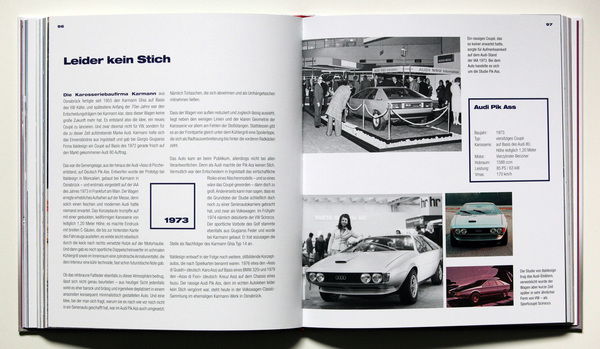
This results in 43 vehicles from the last 85 years. The selection criteria include neither the design era nor the design studio or even the designer responsible; Pander focuses on sensational models that are as quirky and unusual as possible. Phew, from this point of view alone, I can think of another vehicle per second in addition to the forty-three presented.
Pander also seems to focus more on the modern era, around half of the cars are from the last 20 years, although the 1950s to 1970s were particularly rich in interesting show cars. Finally, the Americans are only marginally represented, which certainly does not reflect their important role in the history of concept cars.
Clear and distinct
Pander presents the vehicles chronologically in each of the four chapters. The information content on the second double page of each chapter is rather brief with pictures and captions as well as the text, but it is sufficient for an overview. The author usually places the vehicle in its time and tries to emphasize its exceptional claim.
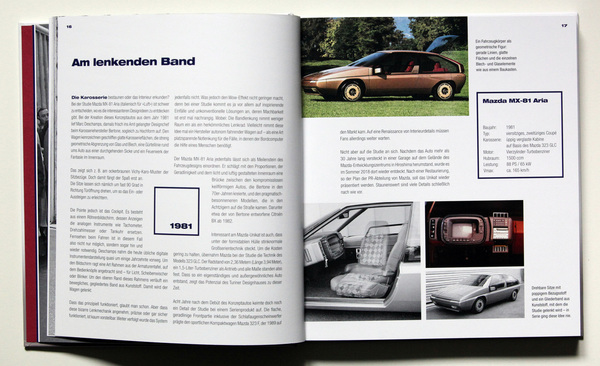
He often succeeds in hinting at the significance of the vehicle in the context of automotive history. Sometimes, however, he goes over the top, for example with the VW Chico from 1991. Pander, who among other things developed the car section of "Spiegel Online", gives free rein to the rather critical "Spiegel attitude" to Volkswagen in general and to VW boss Piëch at the time in relation to the fact that this concept car, which was well advanced, did not go into series production. He builds a picture from speculation that the car was prevented from going into production virtually at the behest of the new VW boss and that a unique opportunity was thus wasted. Anyone familiar with the situation at Volkswagen at the time knows that two-cylinder engine production would not have been worthwhile due to the quantities involved. And one might guess that the production of the complex design would not have led to marketable end prices. The VW annual report reveals that the company simply did not have the money at the time to put a niche model on its wheels alongside its homework. The author rather blames the company's management for a lack of foresight in what was probably a wise business decision.
What remains after 190 pages?
Studies, concept cars - call them what you will - are the diamonds of automotive design. Their uniqueness and the fact that otherwise unrealized ideas, dreams and projects that would otherwise remain secret forever do not disappear, but are deliberately placed in the bright and now strategic spotlight.
Vehicles such as the Mercedes C 111 or the Audi Avus quattro illustrate the importance of this: everyone knows them and they are an integral part of the company's history.
Unfortunately, the book lacks a really deep red thread. As a result, the selection always seems arbitrary, because a connoisseur will immediately think of other models that would have deserved an appearance in the book. What's more, the book lacks anything like a historical treatise and classification. Although the individual vehicles are presented briefly but clearly, there is always no reference to the design era or an in-depth look at the drive system. It is not entirely clear to the reader why the concept car presented was allowed to make it onto the front pages.
Enthusiasts of automotive design will miss the appreciation of the designers the most. After all, such concept cars are usually the result of individual designers or compact teams. This was just as true for Bertone as it was for models from the factory departments. Precisely because the topic of concept cars tends to be neglected in German automotive literature, a multi-volume work with different selection criteria would have been more appropriate.
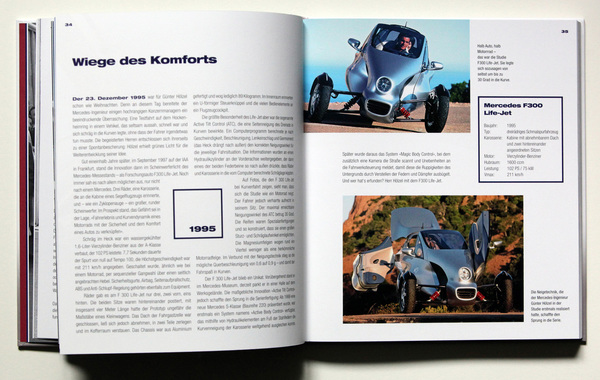
It is to be hoped that this book for € 29.80 will be followed by others that are just as short and concise, but in some places with more background information to bring a little more structure to what is certainly the most exciting chapter in automotive design.
For all those who want to get closer to the subject, the publisher has succeeded in producing a good book at a fair price in terms of layout, scope, selection of images and information content. And most readers will certainly find interesting information about vehicles that they have never seen (or have already forgotten).
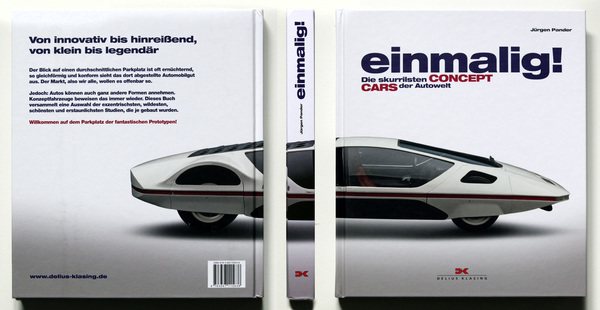
Bibliographical details
- Title: Unique! - The most bizarre concept cars in the automotive world
- Author: Jürgen Pander
- Language: German
- Publisher: Delius Klasing
- Edition: 1st edition 2019
- Format: Hardcover, 215 x 247 mm
- Scope: 192 pages, 195 photos and illustrations
- ISBN number: 978-3-667-11563-8
- Price: EUR 29.90,
- Order/buy: Online at amazon.de, online at the publisher Delius Klasing or in a good bookshop
